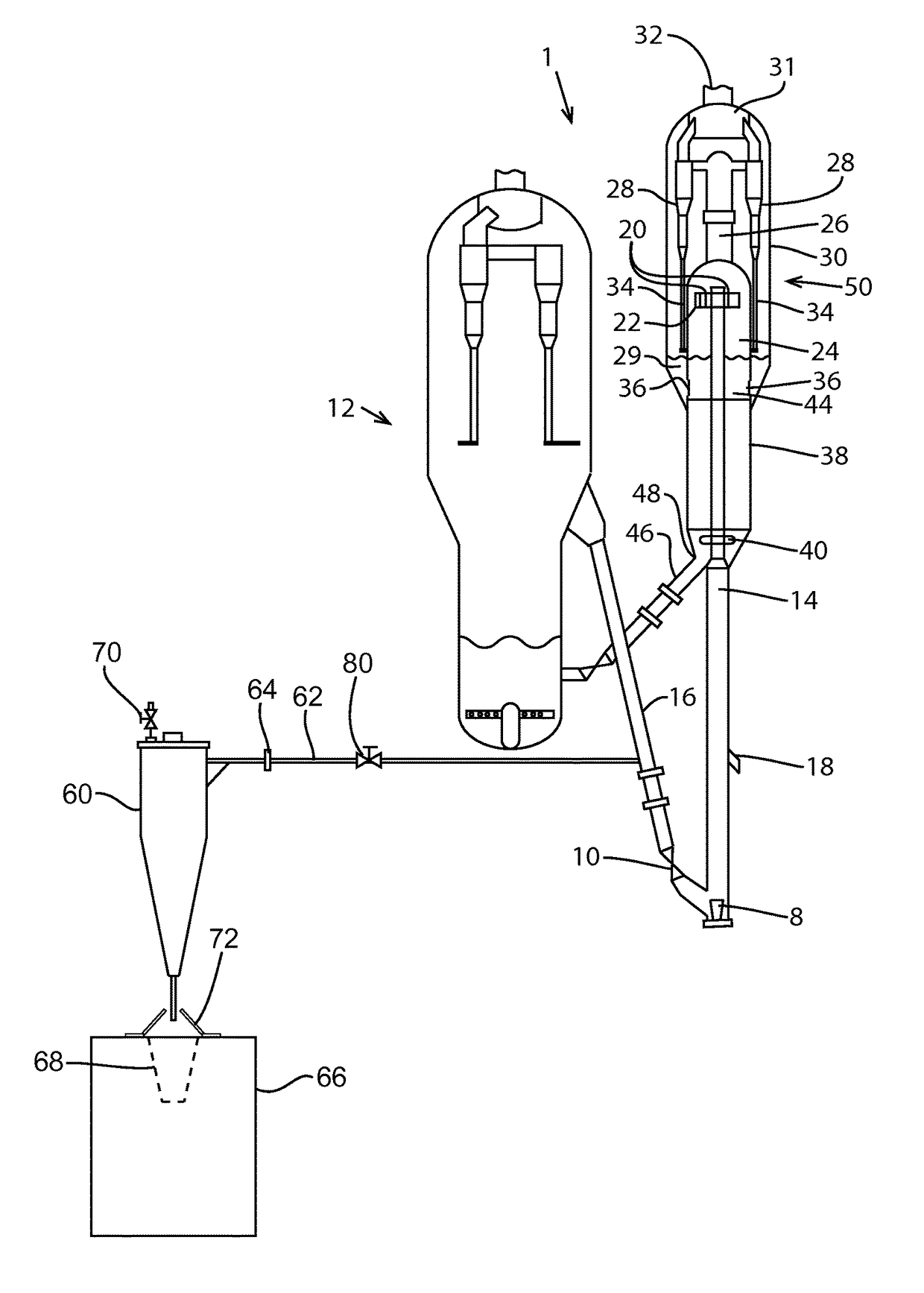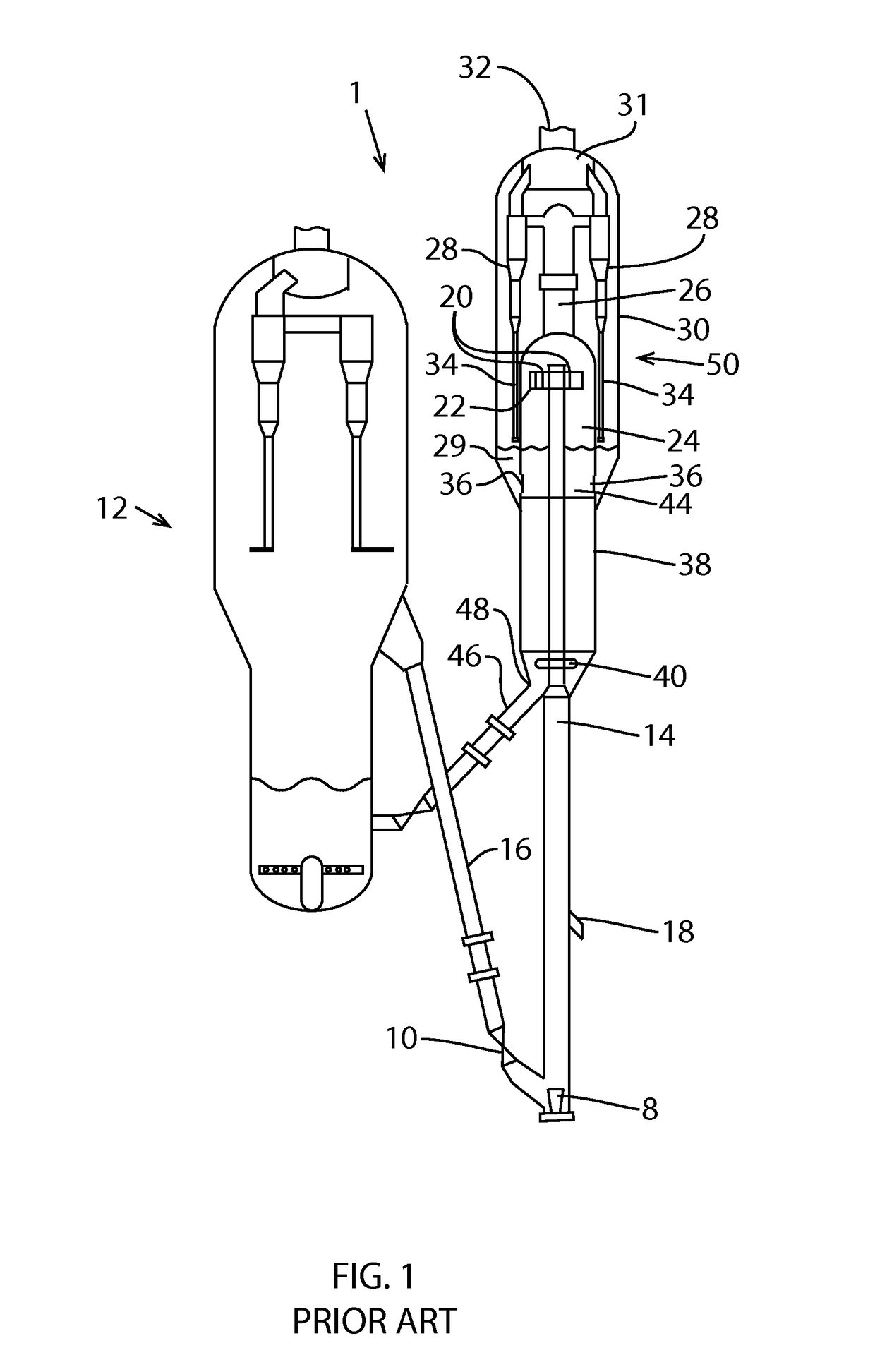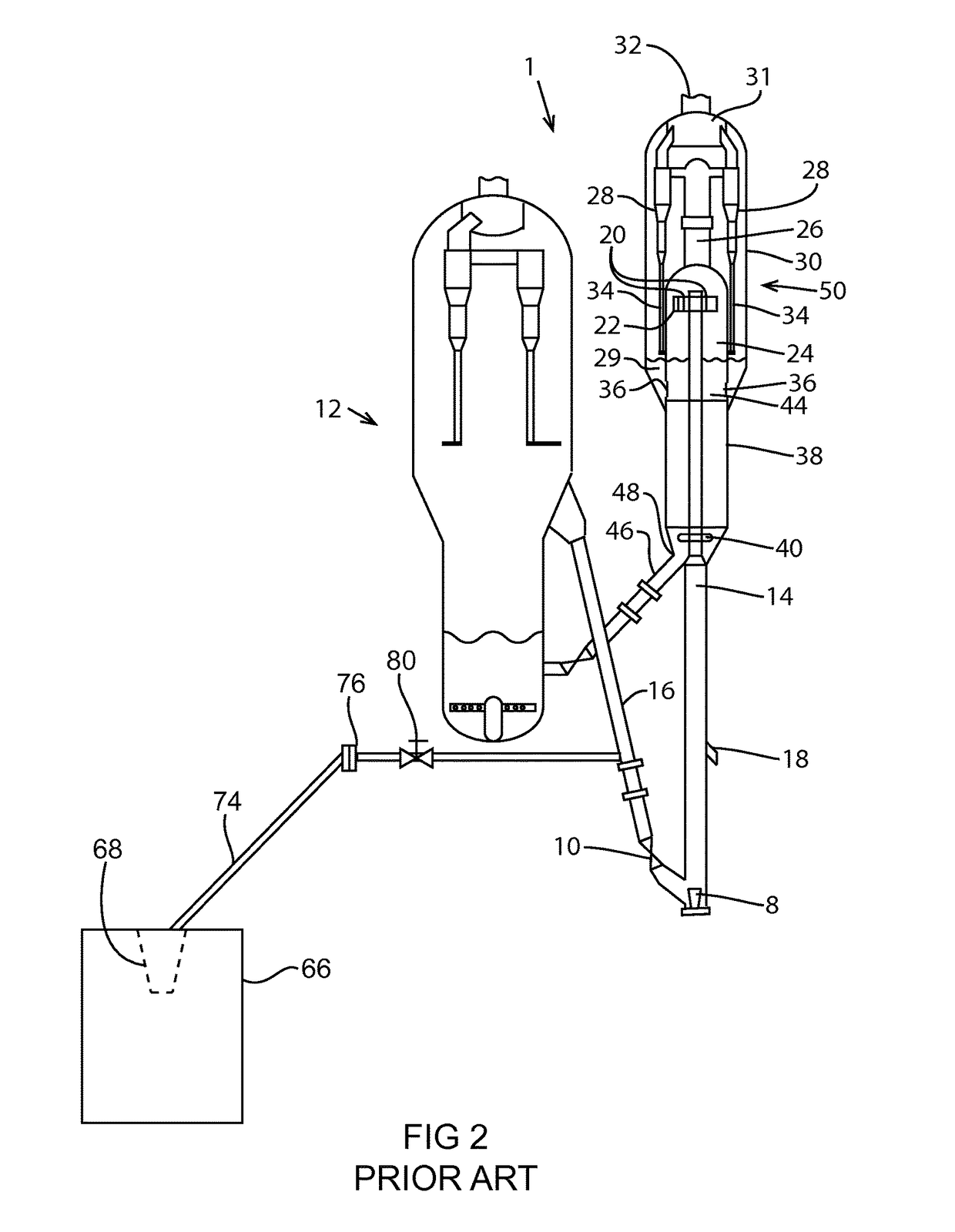FCC catalyst cyclone sampling method and apparatus
a catalyst cyclone and sampling method technology, applied in the field of fcc catalyst cyclone sampling method and apparatus, can solve the problems of increasing catalyst splashing and partially blocking the view of users, and achieve the effects of reducing or eliminating the risk of catalyst splashing, safely monitoring the level of the sampling can, and eliminating catalyst splashing
- Summary
- Abstract
- Description
- Claims
- Application Information
AI Technical Summary
Benefits of technology
Problems solved by technology
Method used
Image
Examples
Embodiment Construction
[0017]Referring now to FIG. 1, a catalytic cracking unit 1 is shown and is comprised of a regenerator 12, and a reactor 50. Catalyst is transferred from the regenerator 12 to the reactor 50 by a regenerator catalyst stand pipe 16. The rate of catalyst transfer from the reactor 50 to the regenerator 12 is regulated by a slide valve 10. A fluidization medium from nozzle 8 transports catalyst upwardly through a lower portion of a riser 14 at a relative high density until a plurality of feed injection nozzles 18 (only one is shown) inject feed across the flowing stream of catalyst particles. The resulting mixture continues upward through an upper portion of riser 14 to a riser termination device. This specific device utilizes at least two disengaging arms 20 which tangently discharge the mixture of gas and catalyst through openings 22 from a top of riser 14 into disengaging vessel 24 that effects separation of gases from the catalyst. Most of the catalyst discharged from opening 22 fall...
PUM
| Property | Measurement | Unit |
|---|---|---|
| velocity | aaaaa | aaaaa |
| temperature | aaaaa | aaaaa |
| molecular weight | aaaaa | aaaaa |
Abstract
Description
Claims
Application Information
 Login to View More
Login to View More - R&D
- Intellectual Property
- Life Sciences
- Materials
- Tech Scout
- Unparalleled Data Quality
- Higher Quality Content
- 60% Fewer Hallucinations
Browse by: Latest US Patents, China's latest patents, Technical Efficacy Thesaurus, Application Domain, Technology Topic, Popular Technical Reports.
© 2025 PatSnap. All rights reserved.Legal|Privacy policy|Modern Slavery Act Transparency Statement|Sitemap|About US| Contact US: help@patsnap.com



